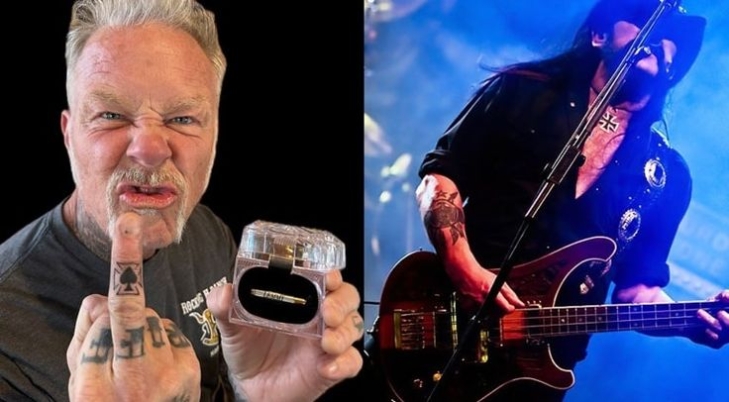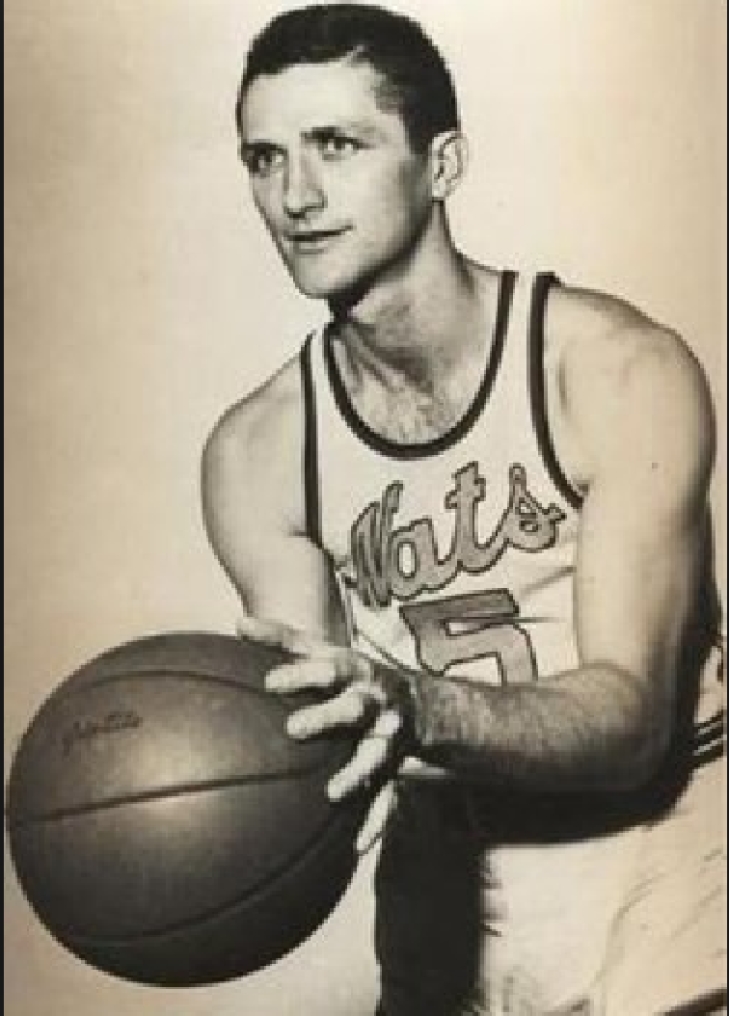
Committee Chairman
James Hetfield slams the Rock Hall over Motorhead's omission
During a recent appearance on the Metallica Report, Metallica frontman James Hetfield expressed his dismay that the iconic Lemmy Kilmister has not yet been inducted into the Rock and Roll Hall of Fame. In a heartfelt tribute, Hetfield revealed that he had recently gotten a new tattoo, which used Lemmy’s ashes, a permanent symbol of his respect and admiration for the leader of Motorhead.
Hetfield's words were poignant while describing the artwork:
“The Iron Cross and the ace of the spades. Lemmy is able to still fly the bird to the world via me. And just a reminder of what an inspiration he has been in my life – what to do, and what not to do.”
In regards to Motorhead’s exclusion from the Rock and Roll Hall of Fame, Hetfield stated:
“The most rock and roll lifestyle living person on this planet is not in the Rock and Roll Hall of Fame, which is a travesty, a shame. It’s kind of a disrespect to rock and roll, basically.”
In our most recent (though not yet updated to reflect the 2024 inductees and 2025 eligible acts) Motorhead was ranked #17 of those to consider for the Rock and Roll Hall of Fame.
Notinhalloffame List Update: 141-150 on Football Revised
The problem with running a Hall of Fame-related website is that many of the big ones we cover all have announcements within months of each other. The backbone of what we do is list-related, resulting in a long push to revise what we already have, specifically now with our Football and Basketball Lists.
At present, we have a minor update as we have completed the fifteenth ten of the 2024 Football List, which you can comment on and vote on:
The new 141 to 150:
141. Isiah Robertson
142. Gino Cappelletti
143. Irving Fryar
144. Hardy Nickerson
145. Chad Johnson
146. Gene Brito
147. Riley Matheson
148. Bill Bergey
149. Nolan Cromwell
150. Rodney Harrison
Rankings are impacted annually based on your comments and votes.
Thank you all for your patience. We will soon unveil more changes to the football and basketball lists.
59. Paul Seymour
Paul Seymour is one of those players who did not look like much of an athlete and did not move like one, but used every pound of his undersized frame and every brain cell in his head to carve out a long career in basketball.
Playing his college ball at the University of Toledo, Seymour began his pro career with the Toledo Jeeps, the Baltimore Bullets of the NBL, and then the Syracuse Nationals, where he was with them when they were absorbed into the NBA. He played for Syracuse throughout the 1950s where his leadership and work ethic made him a valuable commodity, especially on the distribution and defensive side of the ball. A three-time All-Star (1953-55), Seymour was in the top five in Assists in all of those years, with a respectable scoring stat of 14 Points per Game over that period. Not only was Seymour a good player, he played a large part along with eventual Hall of Famer Dolph Schayes in Syracuse, winning their only title in Upstate New York.
Following their title, Seymour became a player/coach and gradually reduced his playing time for the club's benefit. He retired as a player in 1960 but coached various teams for another decade.
55. Don Ohl
Normally, when a player becomes a five-time All-Star in the National Basketball League, they enter the league, albeit with trepidation, but with confidence that they could eventually reach the top tier. And then there is Don Ohl.
Ohl did well in his final season at Illinois and was drafted by the Philadelphia Warriors in the 5th Round of the 1958 Draft, but he never reported and felt he wasn’t good enough. Instead, he played for Peoria of the National Industrial Basketball League, and led them to an AAU Tournament win in Denver. Later, he tried out for the U.S. Olympic Team, and though he did not make it, he proved to scouts and, more importantly, to himself that he could play on basketball’s biggest stage. Detroit traded for his rights, and off he went to the NBA.
Playing at Guard, Ohl was not a flashy player but was durable and consistent. Ohl was more than solid at both ends of the court, and he developed a scoring touch that saw him score at least 17 Points for six seasons in a row (1961-62 to 1966-67), with the last two exceeding 20 Points. Over this time period, Ohl had five consecutive All-Stars (1963-67), but it was split between two teams. The Baltimore Bullets traded for Ohl in an eight-player deal in 1964, and his best seasons of his peak period were as a Bullet. Ohl helped Baltimore reach their first conference final, and though they lost to the Los Angeles Lakers, Ohl not only proved he belonged, but that he could hang with the best.
Ohl was traded to the St. Louis Hawks in 1968, and concluded his career as the team relocated to Atlanta for two more seasons.





